In the modern era, there are usually three types of horror games. There is the interactive style of horror, the ones that are essentially horror movies with button prompts, from FMV-style to full mid-cap CGI creations with superstar casts. These are the games that developers like Supermassive Games have claimed as their niche—Until Dawn, The Dark Pictures anthology, or else the purview of more indie developers like Monsoon Labs and their hit Sara is Missing.
There is the recent surge of MMO horror games, meant to be played with friends, preferably in the dark. These games have the players completing a series of tasks (usually fiddling with generators) all while being chased by some type of monstrous creature that looks like it came out of the 80s. And for a fair few, their monsters literally come out of the 80s. We’re talking your Dead by Daylight, your Phasmophobia, the now defunct Friday the 13th and the soon to be released Texas Chainsaw Massacre.
And finally we have what usually comes to mind when someone mentions “horror game”: survival horror.
Even this category is one I’d split in too. The most obvious examples would be of course the longtime heavy hitters: the Silent Hill series, the Resident Evil/Biohazard series and some recent editions like The Evil Within. These games lean far more heavily toward the “survival” aspect more than anything else—by the time you’ve gotten an hour in, you’ve already started to figure out the pattern to gunning down the equivalent to a small army. The biggest horror quickly starts to go from having too few items to having too many to carry. By the time you get halfway through, you’re more concerned about resource management than the zombie coming at you.
In contrast you have the shockingly rare games that take their survival horror status seriously and that brings us the real subject of this piece: The Outlast series.
Spoilers below for the Outlast game series! Haven’t had the opportunity to get chased down in the dark yet? The Outlast series can be purchased for PS4, XBOX, Switch and PC.
Now let’s get one thing straight—we can’t discuss Outlast without acknowledging the cult classic Amnesia series—or, at the very least, the first game, The Dark Descent. While games had experimented with run-and-hide tactics and sanity meters for years prior, the first person perspective of The Dark Descent and mysterious dark corridors, shadowy creatures and occultism made for a nerve-wracking experience. The forced helplessness hit differently once you were looking through Daniel’s eyes and the compelling memory drove you the more forward, eager to unveil the secrets behind the evil Baron and his castle and your role in the whole business.
The influence Amnesia had on later games was unmistakable and while the series moved towards more proactive and action-oriented entries, the bare bones of the first game can be felt for years down the line. Case in point—Outlast.
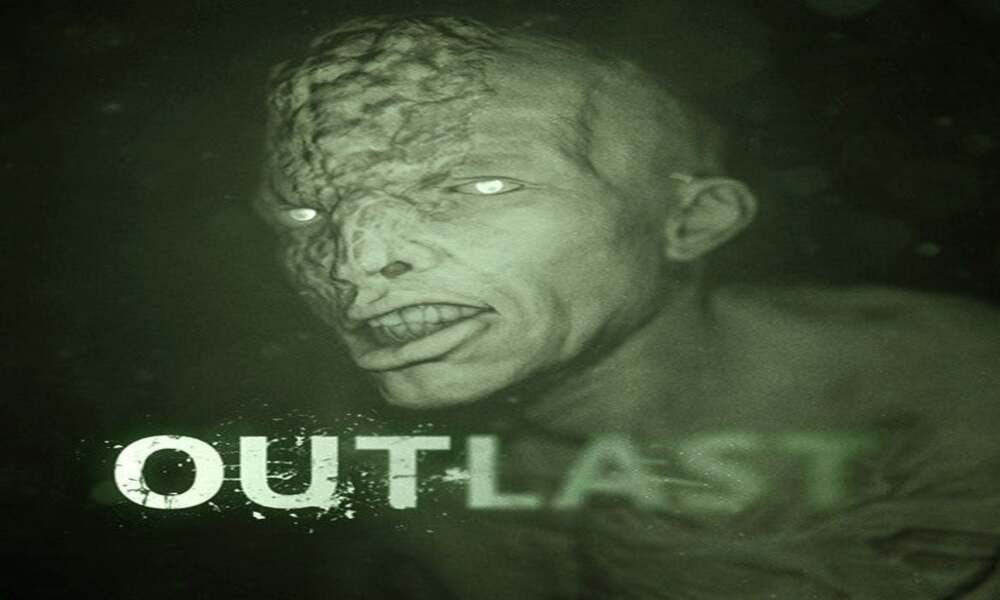
Developed by Red Barrel, the first Outlast game saw players in the shoes of enterprising reporter Miles Upshur, following a tipoff by Whistleblower DLC protagonist Waylon Park about unethical experiments being performed on patients in the Mount Massive Asylum for the Criminally Insane. Miles quickly gets in over his head, discovering a series of bloodstained rooms and slaughtered soldiers before being thrown out of a second story window over the course of five minutes.
From there it’s a constant rhythm of running and hiding, trying to escape the asylum while being hindered by insane inmates, sadistic doctors, nefarious priests and Mount Massive’s incredible shortage of pants. The game makes it clear at the start that you cannot fight and over the course of the game it becomes clear that even your one item, your camera, isn’t the gamechanger it may first appear to be. While its night-vision capabilities are invaluable, more than a few inmates are far too comfortable in the dark and their twisted feature cast in an eerie green makes the experience all the more terrifying.
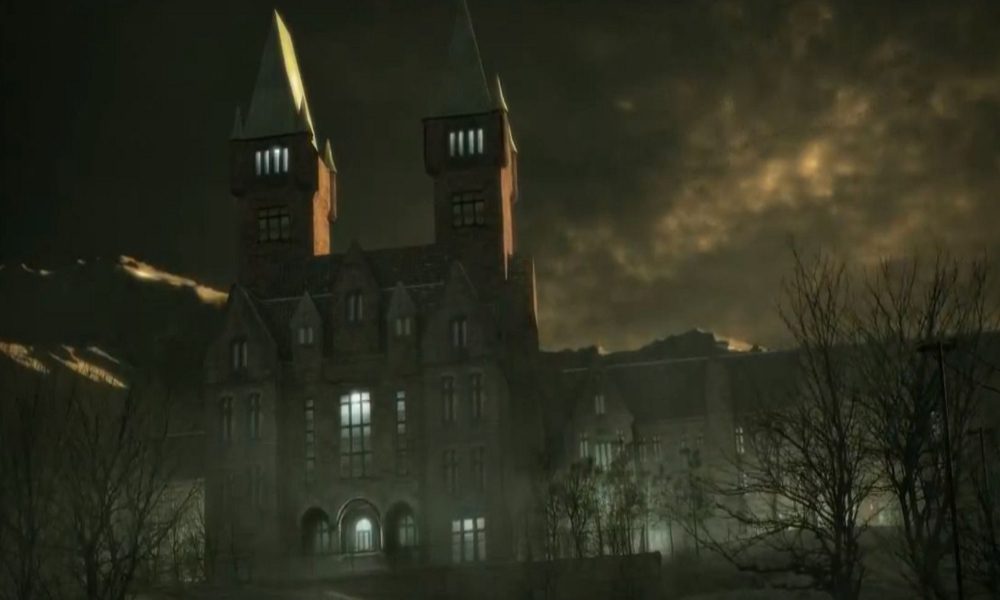
That being said, Outlast has a way of making every chase sequence seem new. You can feel the desperate adrenaline of Miles and Waylon as they bound over desks, slam and barricade doors and hide in lockers and under beds only to scramble out of them in each bid for freedom and the next part of your quest. It’s exhilarating in the way that reminds one of Dark Souls in a way—not paying attention to your environment or a single misstep can spell your doom.
Speaking about protagonists…
Ostensibly you’re playing in the first entry as the aforementioned Miles Upshur or Waylon Park, but what the game does extremely well is provide an environment where the silent protagonist is in fact an incredibly effective audience insert.
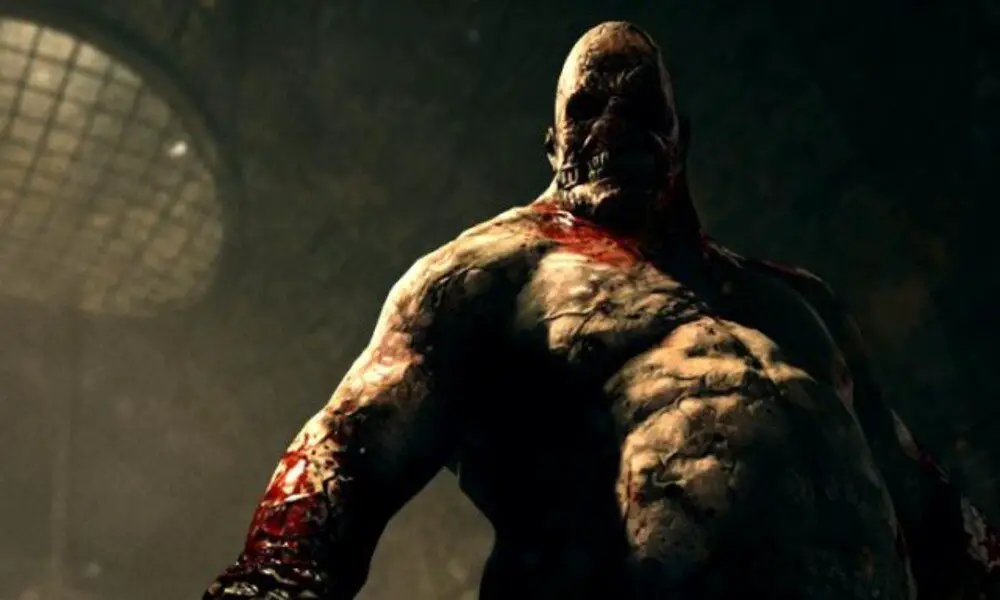
This isn’t new, in theory. The silent protagonist is a staple of video games, designed to immerse the audience into the onscreen world and provide more personal stakes as they roleplay through what more often than not becomes an elaborate power fantasy. It ranges from your crowbar-wielding Gordan Freeman to your nigh unstoppable Dragonborn and they are, undoubtedly, enjoyable.
Where Outlast differs comes back to that element of helplessness. In making the leads utterly helpless in the face of horror, it becomes a reflection of us. As much as we all like to believe we’d be Leon Kennedy or Frank West in a crisis, Outlast reminds us what we’d really be doing—scurrying in the dark and desperately hiding in lockers.
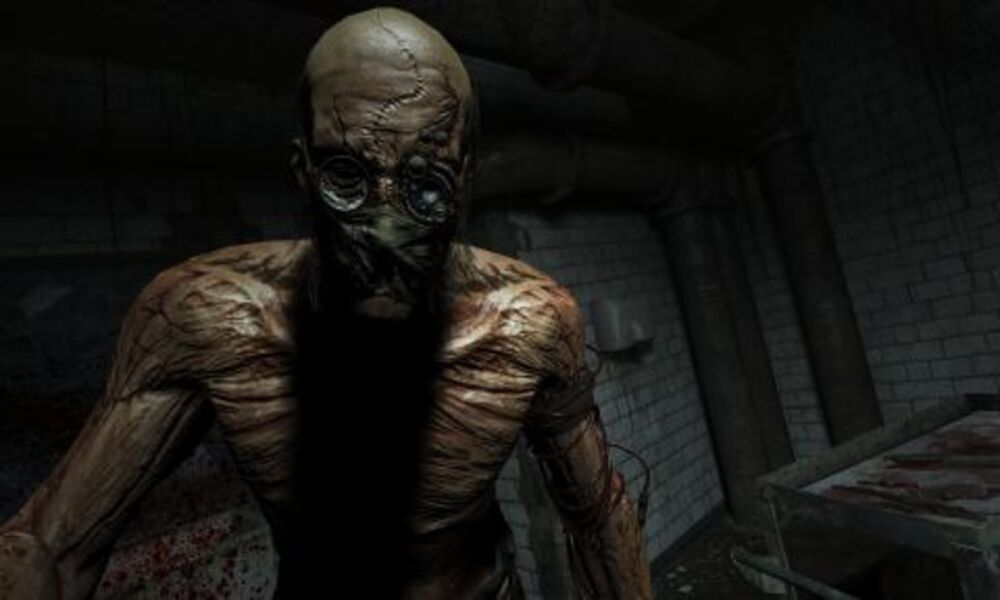
Neither us nor Miles nor any other of the series’ protagonists are heroes. We’re not raging badasses. We can’t pick up a gun and inexplicably slaughter an army’s worth of goons and goblins. We’re not trained soldiers or people practically born with a weapon in hand. The game gives no illusion about what it’s about—we’re not here to make things better; in fact we don’t even care. We’re not soldiers, we’re survivors.
And the game does surrogacy very well. Despite Miles being a journalist you can very much forget that your camera is for more than just seeing baddies in the dark—it’s for actually, you know, recording. But the game doesn’t force feed you the role—recording important events and inmate testimony becomes more of a badge of honor to the player’s nerves than anything else.
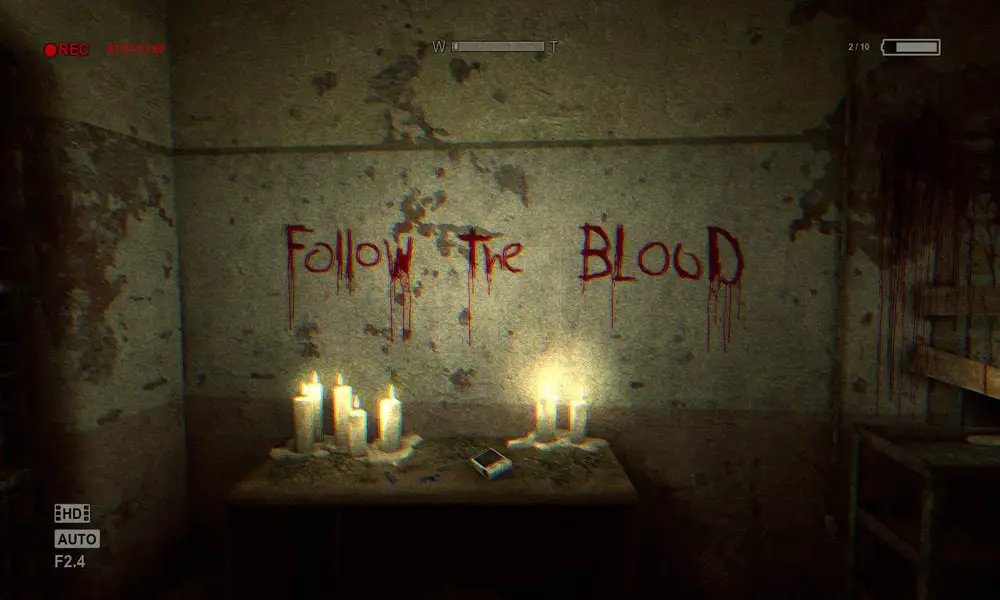
Same with the game’s collectible documents—the asylum has dozens of miscellaneous rooms with more bits and extra batteries and it is very much a question of how willing you are to take the risk and explore a bit. In theory, you could go the entire game without learning more than the bare bones of the story unfolding at Mt. Massive and it’s great. I love myself some lore but it’s excellent storytelling that the game also recognizes that for many players, being a journalist is far less important than trying not to get your throat ripped out.
And while while there often isn’t an opportunity to take in the sights, the atmosphere of the asylum, ranging to its bloodstained modern renovations to the flooded basements and crumbling centuries old sections makes it a creepy, impressive sight to take in when you’re not tumbling out of air vents or being dismembered.
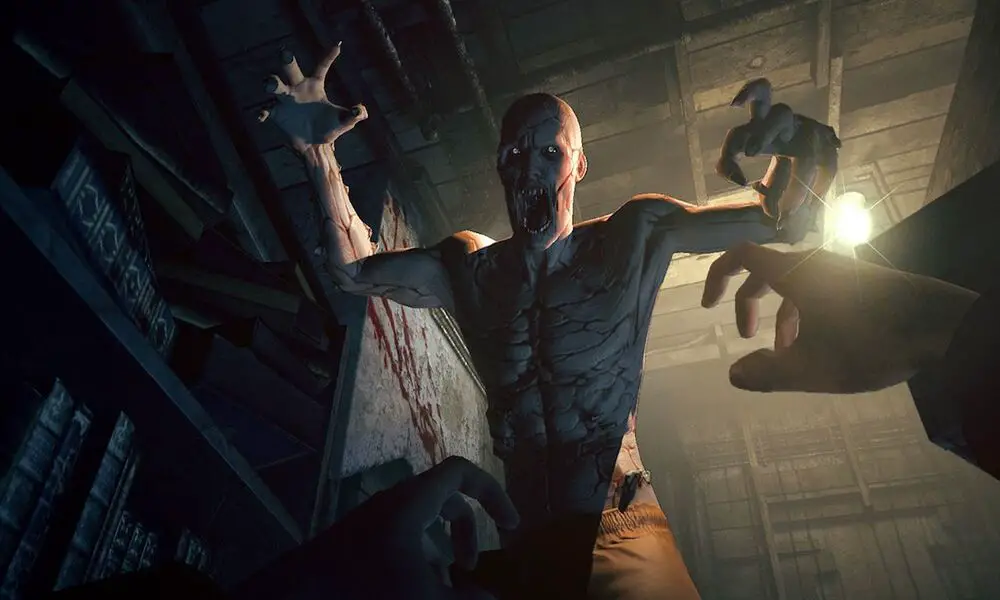
I won’t get into Outlast 2 here, not because it’s bad, but because it takes the elements of silent surrogacy that I mention earlier and discards them in favor of spoken protagonist Blake Langermann, who has his own thoughts, opinions and storyline. As such, the audience, while emphasizing with him, doesn’t find themselves slipping into his shoes as easily. That being said, his story, the atmosphere and the mystery of the horror he and his wife find themselves trapped in is compelling all the same, and worth a playthough.
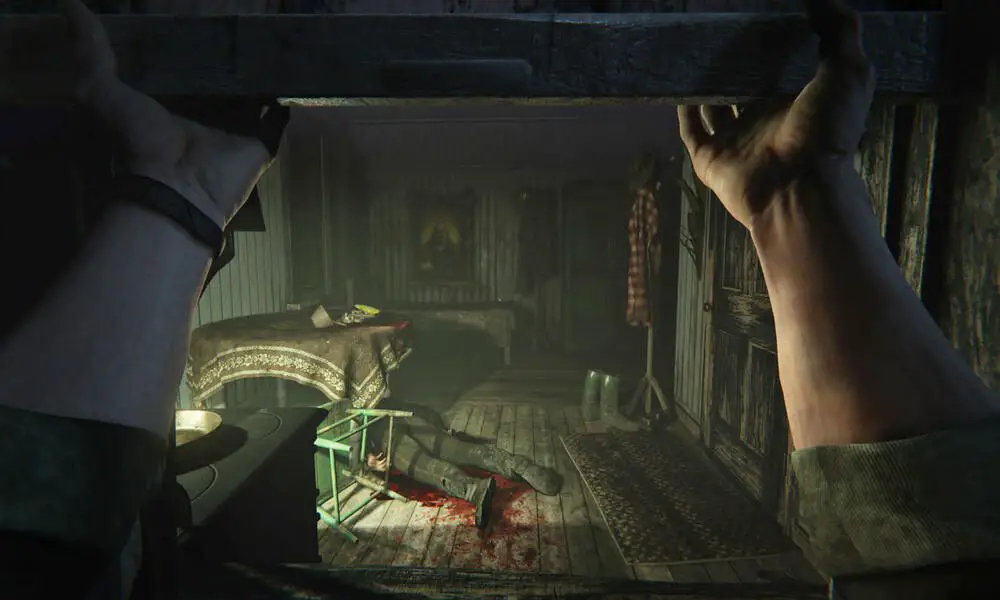
Of course, now that I’ve mentioned Outlast 2, I’ve got to mention the newest installment, The Outlast Trials. And here is where my enthusiasm wanes. Unlike the story based horror of previous entries, Trials is a multiplayer stealth horror—on paper.
In practice it’s sigh-inducing at best, infuriating at worst. Anyone who’s played a co-op game with others knows that your mileage may vary when it comes to skill and efficiency amongst one’s friends, let alone three of four strangers. Getting people on the same page is difficult enough without the added variable of getting them to also utilize elements like caution and observation.
Of course, knowing that some players platinumed Dishonored and other have the stealth grace of a rusty fridge, Red Barrels went and added little quality of life aspects to smooth the journey for players. In-game sound tracking to distract AI, smoke bombs, healing syringes, etc. And while these are logical steps to take, I will say it makes it feel less like Outlast to me, even if half the players leaving one to be pummeled on and killed is pretty on brand for realistic horror.
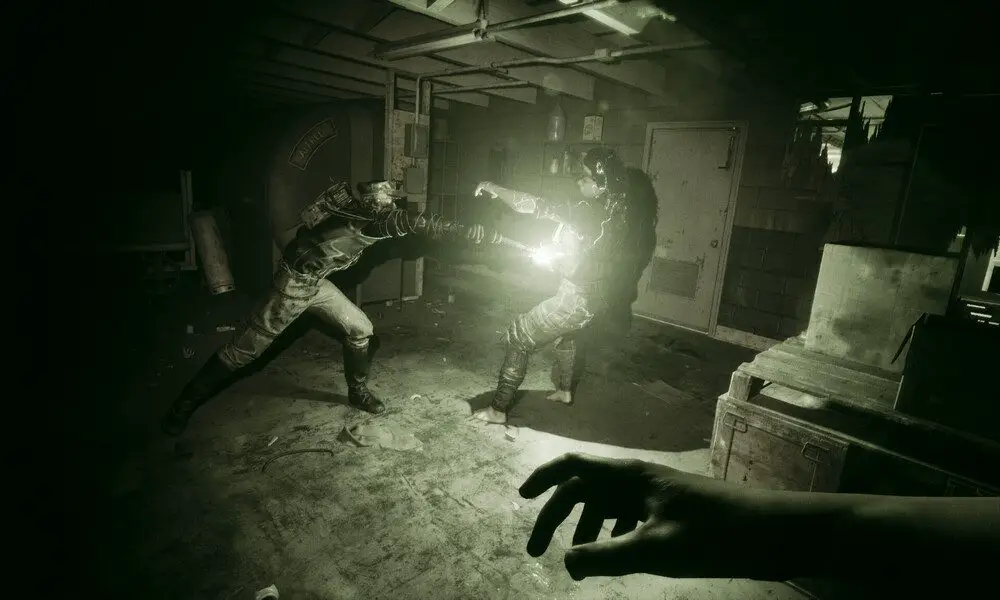
In fact I think that that is perhaps my largest source of disagreement with Trials—more than the fact that it doesn’t feel like an Outlast game, it doesn’t feel like an original one either.
At the time of writing it’s still in the early access stage, and I know that updates, maps and graphic overhauls are bound to come along in the coming months and potentially, years. But unless there is a major dynamic shift, The Outlast Trials doesn’t feel that much different from the dozen other MMO horror games I mentioned earlier.
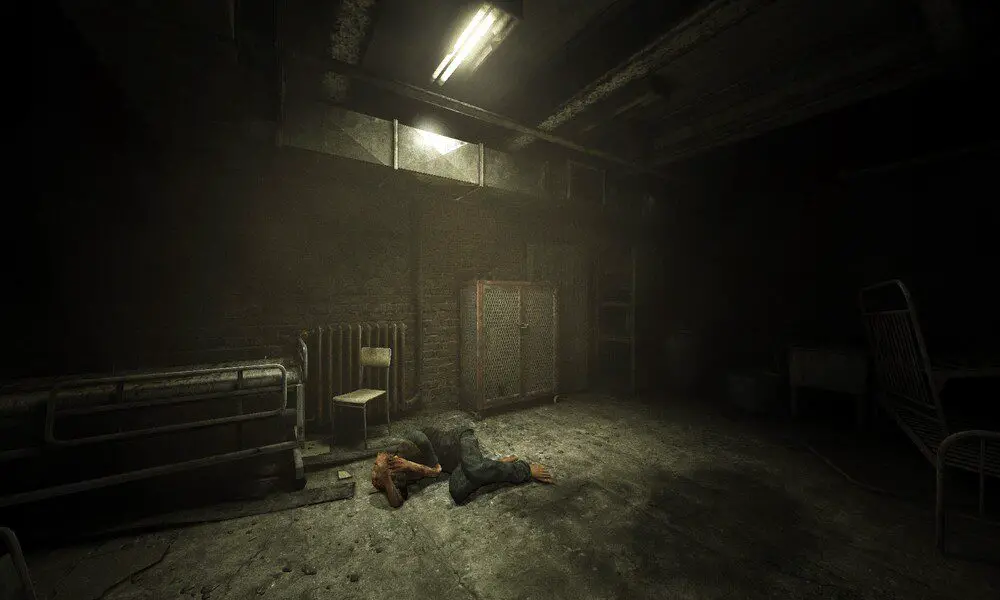
Really boiling down to it, a session of Trials doesn’t seem much removed from a session of Dead by Daylight. The main exception being that the Trials AI alternates between being far dumber and far more intelligent than a human controlled killer ever could be. But about the third time I was frantically trying to restart a sparking, malfunctioning generator I was struck with an overwhelming sense of deja vu: I’ve done this before. Whether it was in a police station or a barn or a school (all inexplicably covered in rust and trash and blood), I’ve done this before.
I won’t go as far as to say we’ve reached the point of oversaturation, but with Dead by Daylight adding a Nicholas Cage skin, Sumo Digital working with Friday the 13th publisher Gun Interactive to release the aforementioned Texas Chainsaw Massacre, and various “clones” being released with their own special (and sometimes comical) spin—for example, hide-and-seek based Propnight—it’s swiftly becoming clear that the asymmetrical MMO horror genre is starting to become full and originality is key. And loathe as I am to admit it, The Outlast Trials doesn’t quite hit it, at least not yet.
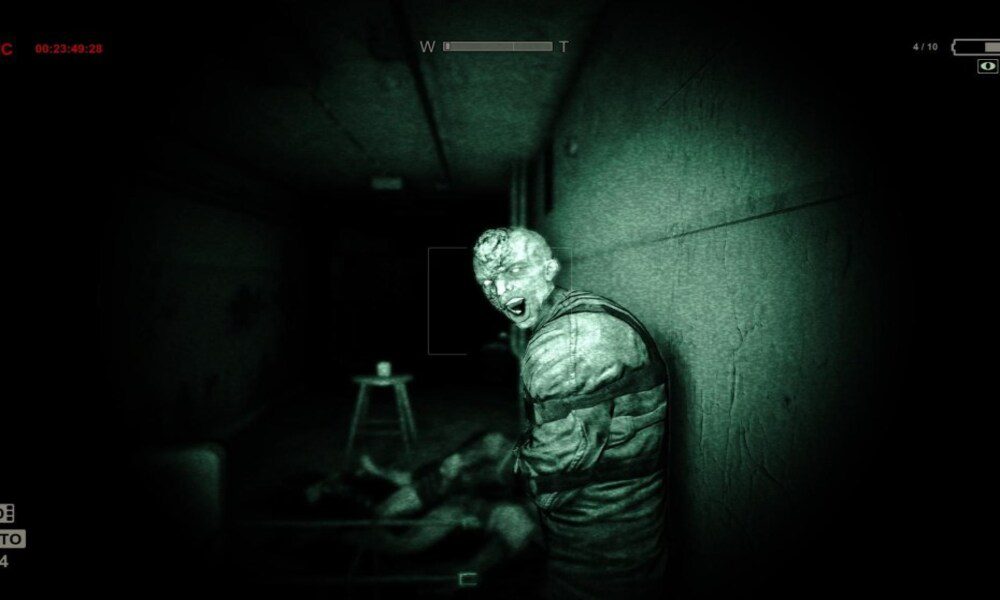
That being said, it’s not exactly a black mark on the Outlast franchise. The game is sprinkled with lore about the villainous Murkoff Corporation, whose actions haunted the heroes of the first and second games and who’ve apparently been abusing their power since the height of the Cold War. And while I might have preferred another story-based entry, I can’t begrudge Red Barrels’ ambition in branching out.
And even if Trials isn’t up my alley, in the end, I always have the option to pick up my camera once again and be sent running for my life through the halls of Mt. Massive Asylum.
Images courtesy of Red Barrels
Have strong thoughts about this piece you need to share? Or maybe there’s something else on your mind you’re wanting to talk about with fellow Fandomentals? Head on over to our Community server to join in the conversation!

